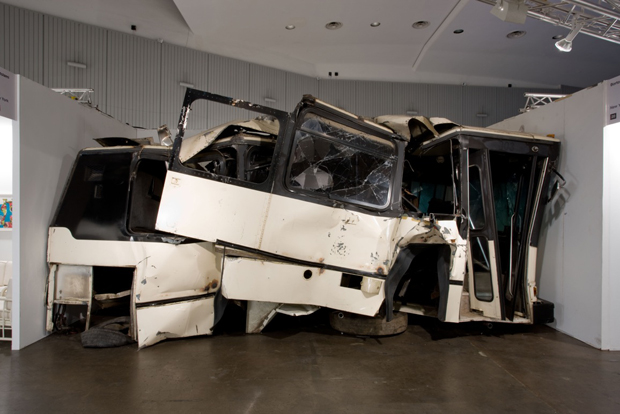
Venice Biennale The Italian Pavilion
Vice Versa brings together 14 artists inspired by philosopher Giorgio Agamben's "diametrically linked concepts"
The Venice Biennale, which opens later this month, wouldn't be complete without some high-brow theoretical puff, so don't fret if you don't grasp the ideas behind the Italian Pavilion's exhibition, entitled Vice Versa.
It picks up on a concept introduced by Giorgio Agamben in his book Categorie Italiane. Studi di Poetica (1996), in which the philosopher maintained that in order to interpret Italian culture, we must identify a "series of diametrically linked concepts capable of describing its underlying characteristics - binomials such as tragedy/comedy, architecture/vagueness and speed/lightness thus become original keys for reading the fundamental works and artists of our cultural history."
{media1}
Got it? In truth Italy does seem to be a place of dualities and contrasts; it's the ancient cradle of Europe, and also one of its newest countries; home to Futurism, and the greatest number of UNESCO World Heritage Sites. Curator Bartolomeo Pietromarchi has dwelt on this, drawning together installations, sculptures, paintings and performances from 14 Italian artists, pairing them up in a series of seven rooms, in this idiosyncratic investigation of of the country.
The work of Fabio Mauri and Francesco Arena is used to examine the relationship between personal and collective experiences of history; Marcello Maloberti and Flavio Favelli "chip away at the boundaries between autobiography and collective imagination"; Sislej Xhafa and Piero Golia examine both comedy and tragedy; while Luca Vitone and Luigi Ghirri will examine how the meanings of landscape vascilate between one's vision and memory.
{media2}
Highbrow themes aside, a more pressing aspect of current affairs has imposed itself onto the pavilion. Funding for the Italian involvement in the biennale has been slashed, and the pavilion's organisers have launched a crowd-funding drive to make up the shortfall. The Art Newspaper reports that they have raised more than €140,000 so far. Good to see that, in this real-world example, The Italian Pavilion has found a near equal and opposing force for European austerity.
To find out more about the pavilion, which opens at the beginning of next month along with the rest of The Biennale, go here. For more on Fabio Mauri's work, consider our Cream 3 contemporary art volume. And for the best possible overview of bienials through the years check out our peerless new book Bienials and Beyond: Exhibitions That Made Art History.